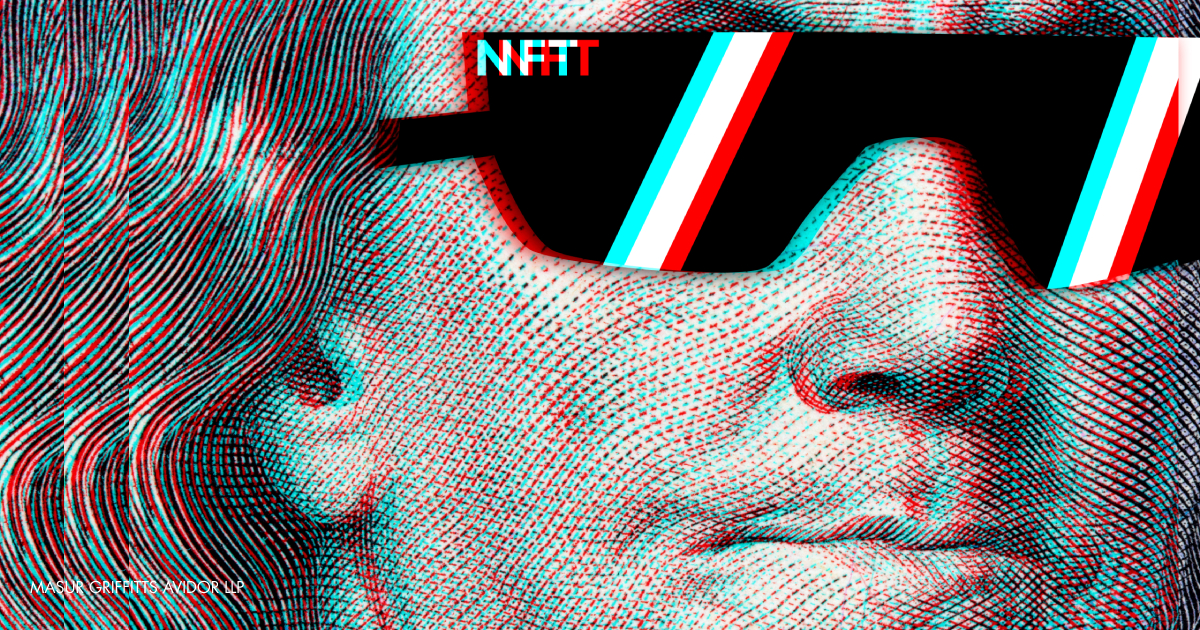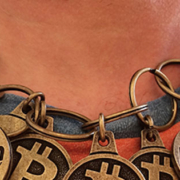NFTs: Boon or Burden for Artists and Investors?
By: Lauren Mack and Ilana Faibish
NFTs (or Non-Fungible Tokens) are the latest blockchain-based craze to take over the Internet. Memes, tweets, sports highlights, Charmin toilet paper GIFs, and yes, even quarantine flatulence recordings have been minted into NFTs and sold. But while some artists may be making millions selling NFTs, many questions still remain as to their veracity, profitability, and longevity.
What Exactly is an NFT?
Essentially, an NFT is a record that shows who owns a unique piece of digital content. It is similar to a deed to a house, except instead of a piece of paper being stored in a government building basement, the record of sale is placed on a blockchain that creates a digital and irreversible record of who owns that digital content. A blockchain is a secure network of computer systems that record and provide proof of transactions, such as the purchase and sale of NFTs. Any digital work can be minted into an NFT.
While NFTs show great promise for the monetization of digital art, they have drastically warped – and perhaps exploited – the art sale and investment landscape by creating complex and novel markets and opportunities for artists, brands, collectors, and investors.
What Can I Do With an NFT?
The primary benefit of owning an NFT is that you have the right to exclude others from claiming ownership of the digital work evidenced by the NFT. NFTs typically do not grant copyright ownership in the art itself, however. This mirrors the ownership of physical art. When you buy a painting (or a book or a song) from an artist, you own the physical version, but the artist still owns the copyright to the work and has the right to recreate and sell it as many times as the artist wants.
That said, it is possible to be granted exclusive ownership of the copyright in the work if the author expressly conveys the copyright to you in a signed writing. Due to the nature of blockchain technology, it is unclear whether recordation on a blockchain alone is the equivalent to a “signed writing” within the context of the United States Copyright Act. When assignment of the copyright is intended, it is therefore advisable to have a written agreement accompanying the NFT that clearly transfers ownership of the copyright in the work.
Even when there is no transfer of copyright ownership, a written agreement is critical to understanding and preserving each party’s rights, including by describing how purchasers may use their digital assets and what benefits the artist receives. These agreements are often structured as a non-exclusive license to the underlying work. Depending on the circumstances, the license terms may state that others may be able to download, view, or listen to the work that was minted into the NFT, or that the buyer cannot profit from the use of the underlying work.
How is This Benefiting Artists?
Aside from the current fervor to purchase anything at all as an NFT, NFTs can be used to generate a new type of revenue for the creator. When an artist sells a physical painting, the artist is compensated only once when the painting is first sold. When the purchaser resells the painting – which may have increased in value if the artist has become more well-known – the artist does not have any say in the transaction and cannot claim any portion of the purchase price, despite being the owner of the copyright in the artwork. This is known under US copyright law as the “first sale doctrine”, and it is a limitation on a copyright owner’s exclusive right to distribute their works. When art is sold as an NFT on a blockchain, however, a commission can be attached that will automatically send payment to the copyright owner every time the NFT is resold, allowing the artist to share in the increased value of the work.
So What Are the Downsides?
The burgeoning NFT market is not without its risks and unknowns. Both the Copyright Office and the courts have determined that the first sale doctrine does not apply to digital files. This is because the first sale doctrine only applies to the distribution of a single copy. When a file is transferred through the Internet, a copy of that file is made, meaning that any digital sale necessarily includes a reproduction that the artist still has the right to control. Unless this technicality is addressed in a written license agreement accompanying the NFT, purchasers may find that they do not have the right to sell the NFT without the cooperation of the copyright owner, potentially negating any investment benefits.
There have also been several instances where an artist’s work has been minted into an NFT and offered for sale without the copyright owner’s permission, including a Jean-Michel Basquiat drawing where the eventual purchaser was given the option to destroy the physical artwork. Purchasers must be wary of fraudulent listings and do their due diligence in determining whether a seller is the rightful owner of the ability to provide a license or assign the copyright in the NFT, as the case may be. Some markets have identified this risk and will only allow verified works, or in other instances, it is clear to purchasers that the digital asset originates from the copyright owner and NFT creator. For example, purchasers can be confident that NFTs purchased from NBA Top Shot, the NFT collectible marketplace for NBA game highlights, are owned by the NBA and are being purchased from its proprietary blockchain.
Artists whose works are minted into an NFT without their permission are left having to navigate the limited number of ways in which they can protect their intellectual property and legacy in today’s digitally driven world. They can file a DMCA takedown notice or otherwise notify the NFT marketplace of the fraudulent listing, but if a takedown request is unsuccessful then creators will likely have to turn to litigation to protect their rights and artwork. And in the case of original works being destroyed after being minted into NFT, by then it may be too late.
Conclusion
Are NFTs a bubble ready to burst, or a new business model for artists? Perhaps both, but either way we’ll be watching closely as to how NFT sale terms develop, as well as other upcoming opportunities in the blockchain space.









